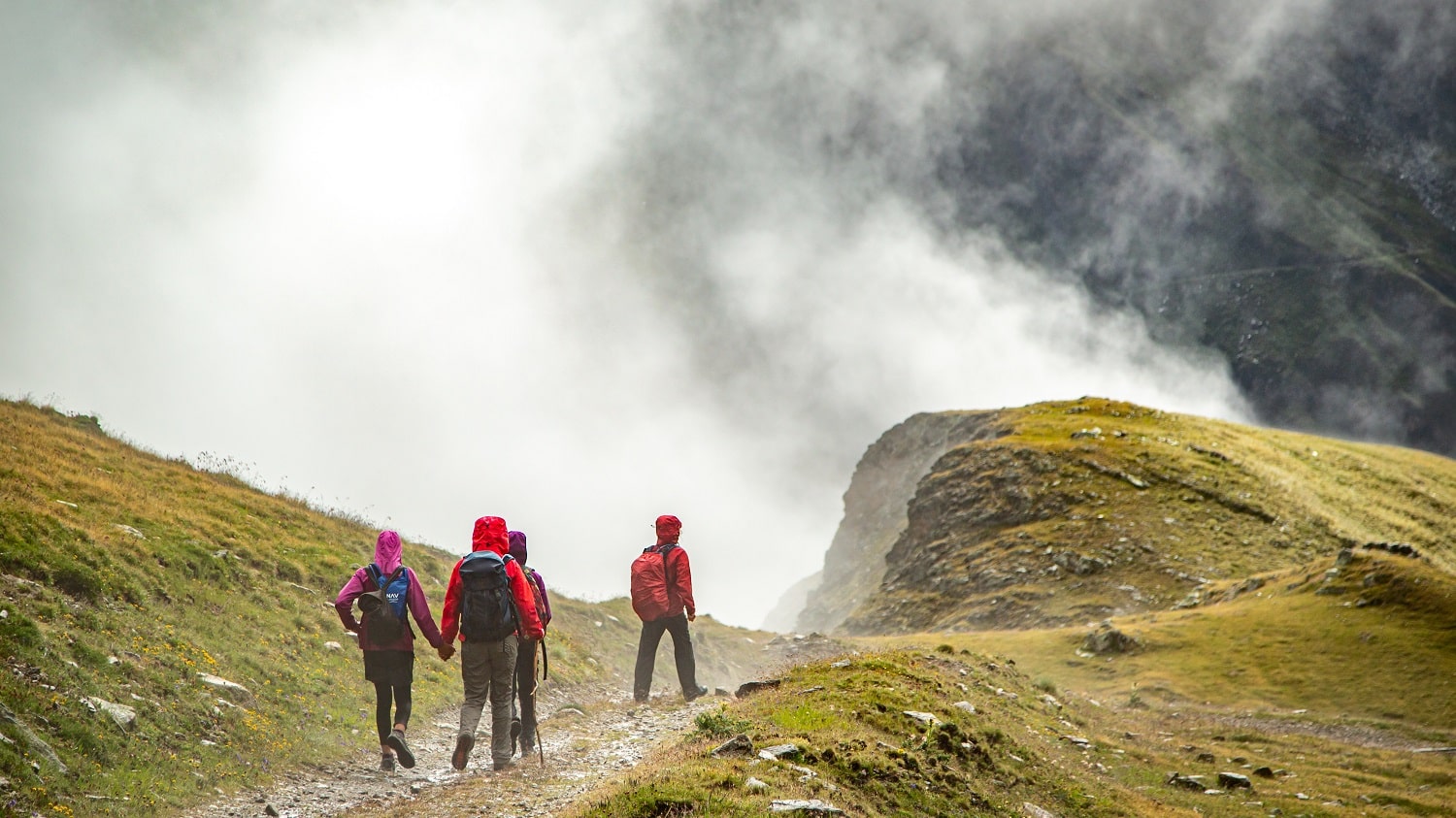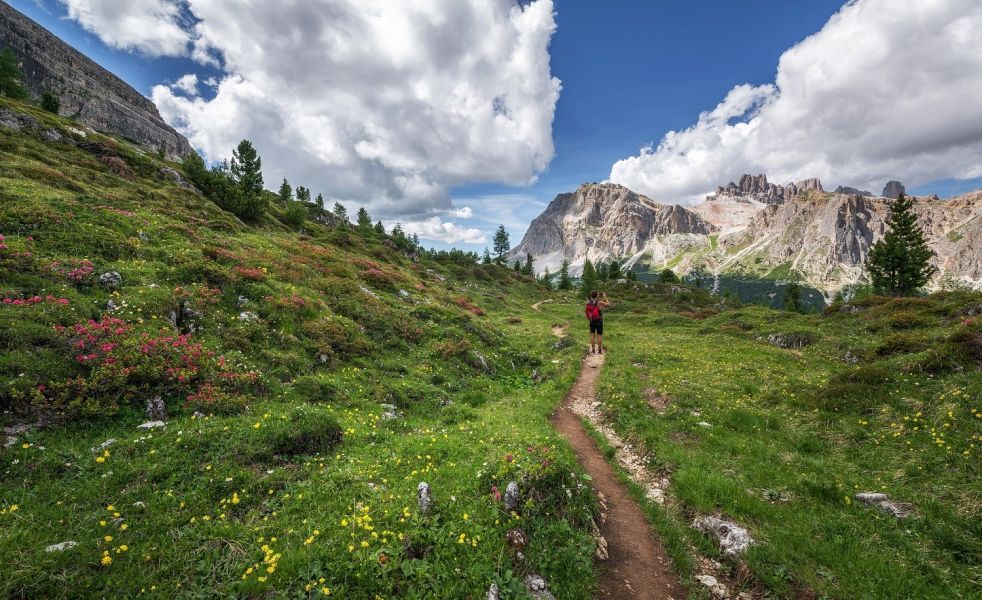If you’re thinking of booking a walking holiday for the first time, then this post is for you. Walking holidays are a great way to slow down and enjoy scenic natural surroundings while staying active, but if you’ve never taken one before then you might not know how to go about it and make the most of your trip. So here are some tips for planning an unforgettable walking holiday:
Self-guided vs guided
Firstly think about what sort of holiday you want. Do you want to do your own thing or would you prefer to go with a guide? The advantages of going it alone are that are free to do what you like, make last minute changes, get some time to yourself, and of course spend less.
But an experienced local guide can vastly enrich your experience, discovering places you might not have thought to visit, and learn a lot about the history and culture of a place, as well as the obvious safety considerations – you won’t get lost and if you feel unwell or hurt yourself then there is a trained professional on hand to help.
Group tour vs independent trip
Again this depends on the type of trip you prefer. Do you like to stay independent or do you prefer to meet new people when you go away?
Group tours are guided and provide you with travel companions, which is especially great if you are travelling solo. Often a real sense of camaraderie forms quickly on this type of trip and you can share your experience with others as well as enjoying the benefits of a tour leader mentioned above, and there are often more things included like airport pickups and luggage transfers, or some extra activities.
That said if you prefer to be spontaneous, a planned group itinerary is probably not for you. Planning a self-guided holiday can more time and energy on your part, but there are options out there where you can pre-book an itinerary with accommodation, luggage transfers and detailed directions (gps coordinates, maps etc) and you just need to get from A to B on the itinerary during the day. That way you can stop off where you like, when you like, and your pace can be as fast or slow as you like.

Photo by Alex Guillaume via Unsplash
Different types of walking holiday
Centre Based
Would you prefer to stay each night in the same location and go on different excursions each day? Then a centre-based walking holiday is for you. This way you can just make sure that your day pack is ready (more of that in a mo) and be out the door, as well as get to know the town or village where you are based.
Point to point
This type of walking trip can be a little more challenging, but ultimately more rewarding. You stay at a different location each night, walking from one place to the next during the day. You may start and end your trip in the same location, so travel in a ring, or start in point A and end in point B, without returning to point A.
This is a great option if you want to explore an area more widely and cover more ground. Remember though to either travel light or organise luggage transfers so you don’t have too much weight to carry during the day.
How to prepare
The great thing about the vast majority of walking holidays is that they require no experience, you can just turn up and get going, no specialist equipment is needed (apart from some good footwear, see below).
That said a reasonable level of fitness is recommended for you to get the most out of your trip. If you are planning to cover lots of kilometres then do make sure you get a few weeks preparation in first to warm up. Take long walks near home, including up and downhill where possible, and over unpaved ground so in the countryside or woods. This will help with your stamina and is also an excellent opportunity to break in your hiking shoes/boots to make sure they fit as well as possible when you travel.
What to pack
We always recommend travelling light where possible, but remember to take the following:
Proper walking boots
The essential part of your kit, if your feet are not comfortable and protected on a walking holiday then you might as well stay at home. Don’t think you can get away with trainers on a walking holiday, you can’t. Walking boots offer stability and comfort over long distances and uneven ground, which most trainers do not. You will be a lot more comfortable with appropriate footwear and the risk of injury and blisters is greatly reduced (if broken in properly!). Boots that cover your ankle are recommended, especially on uneven terrain as they can stop you from twisting or spraining your ankle if you miss your footing. For a more detailed explanation see this guide by Gore-Tex.
Water/wind proof jacket
To protect you against the elements – weather is unpredictable, especially in the mountains, so even if the forecast is bright sunshine this can change very quickly, be prepared and always take this with you in your day pack, they are lightweight and fold away to almost nothing so don’t weigh you down.
Layers
Make sure you take a warm fleece or jumper as a mid-layer, but also a lighter base layer. The key is to wear more layers that you can put on or take off as necessary, to keep you comfortable and stop you from overheating or freezing if and when the weather changes. It also pays to take a spare in your day pack so if you sweat a lot you have a nice dry top to change into when you stop for a break.
Comfortable backpack for hikes
Make sure you have a good sturdy outdoor backpack, ideally with a waterproof cover for any sudden downpours.
Things to take with you in your day pack:
Spare base layer and a good mid layer.
Map or directions – don't rely on your phone for directions as you may well run out of battery or signal just when you need it most (though make sure you have it anyway for emergency phone calls and photo ops). If hiking without a guide make sure you know your route and have it planned on a map/gps system. A compass wouldn’t hurt either.
Swiss army knife – can be useful and takes up very little space
Sunglasses
Wool hat in case of bad weather, keeping your head warm helps a lot and it takes up hardly any space.
Insect repellent & sun cream
Portable first aid kit – it's always handy to have some disinfectant, plasters and gauze with you just in case, especially if going without a guide who would always have these with them.
Water bottle - Make sure you have plenty of fluids on you as hiking is thirsty work. A bottle with filter (e.g. life straw or water well) is useful as you can fill it up anywhere there is running water so from moving streams or rivers.
Snack - Take an energy bar or two. Make sure though to keep the wrapper in your pack when you’ve eaten it and dispose of it when you get back to your accommodation.
Optional extras:
Walking poles – some people take these along to help with balance and posture, others to get a more complete workout - often they can be folded and attached to your rucksack if you’re not using them.
Hopefully this will help you to go ahead and plan your walking holiday, if you require any further advice feel free to drop us a line.
You can find our selection of walking holidays in Europe here.
Main photo via Pixabay
